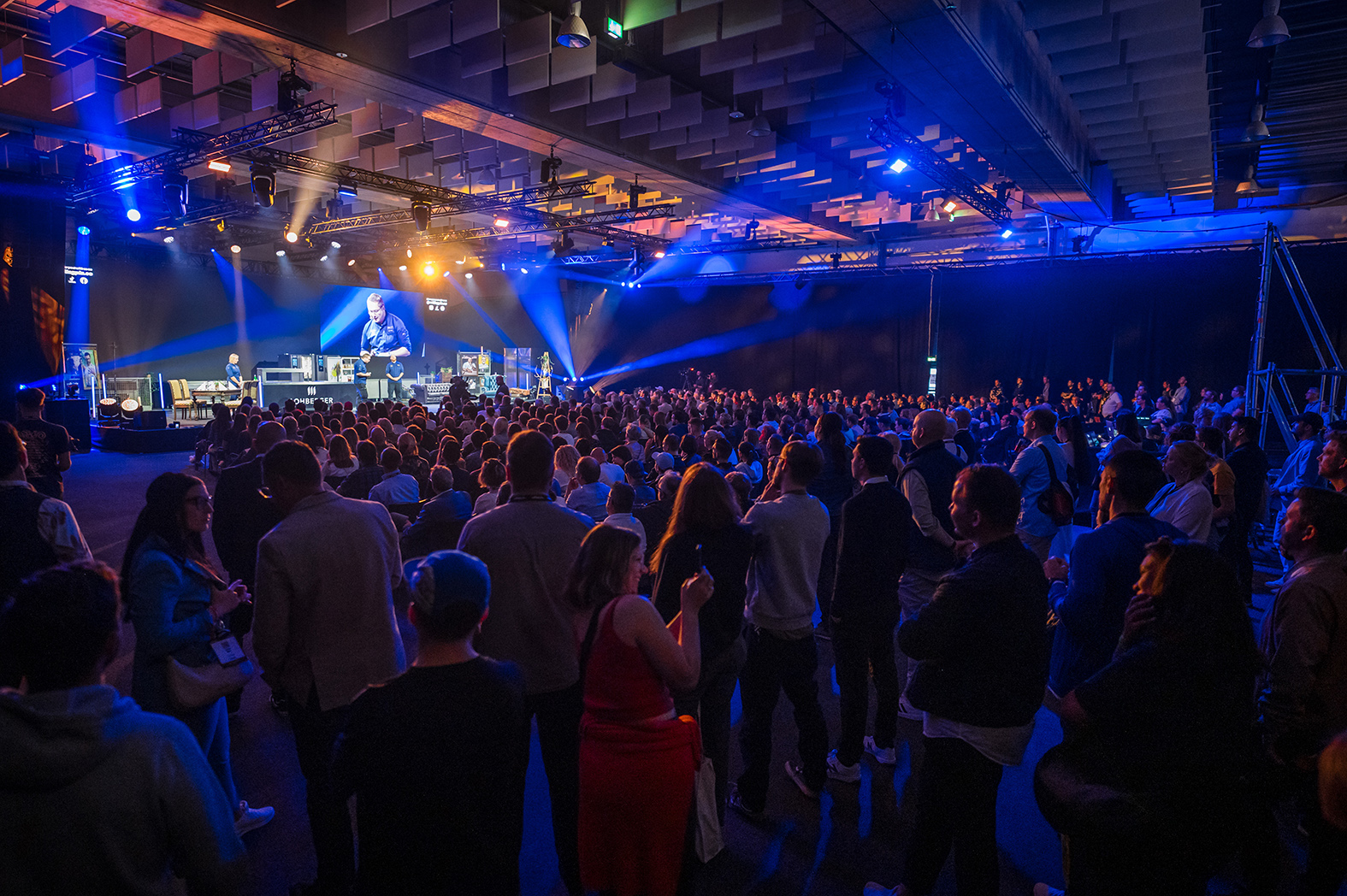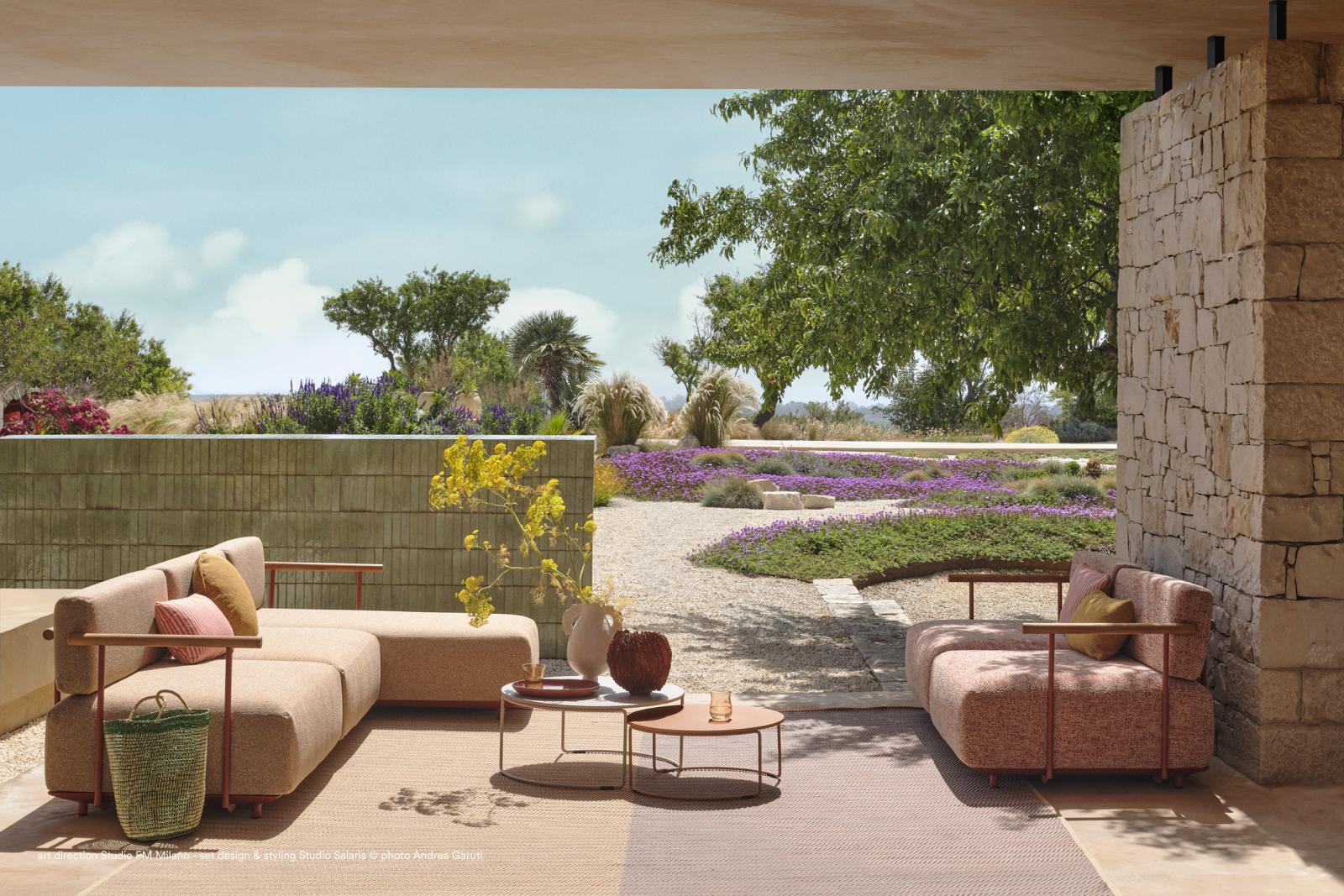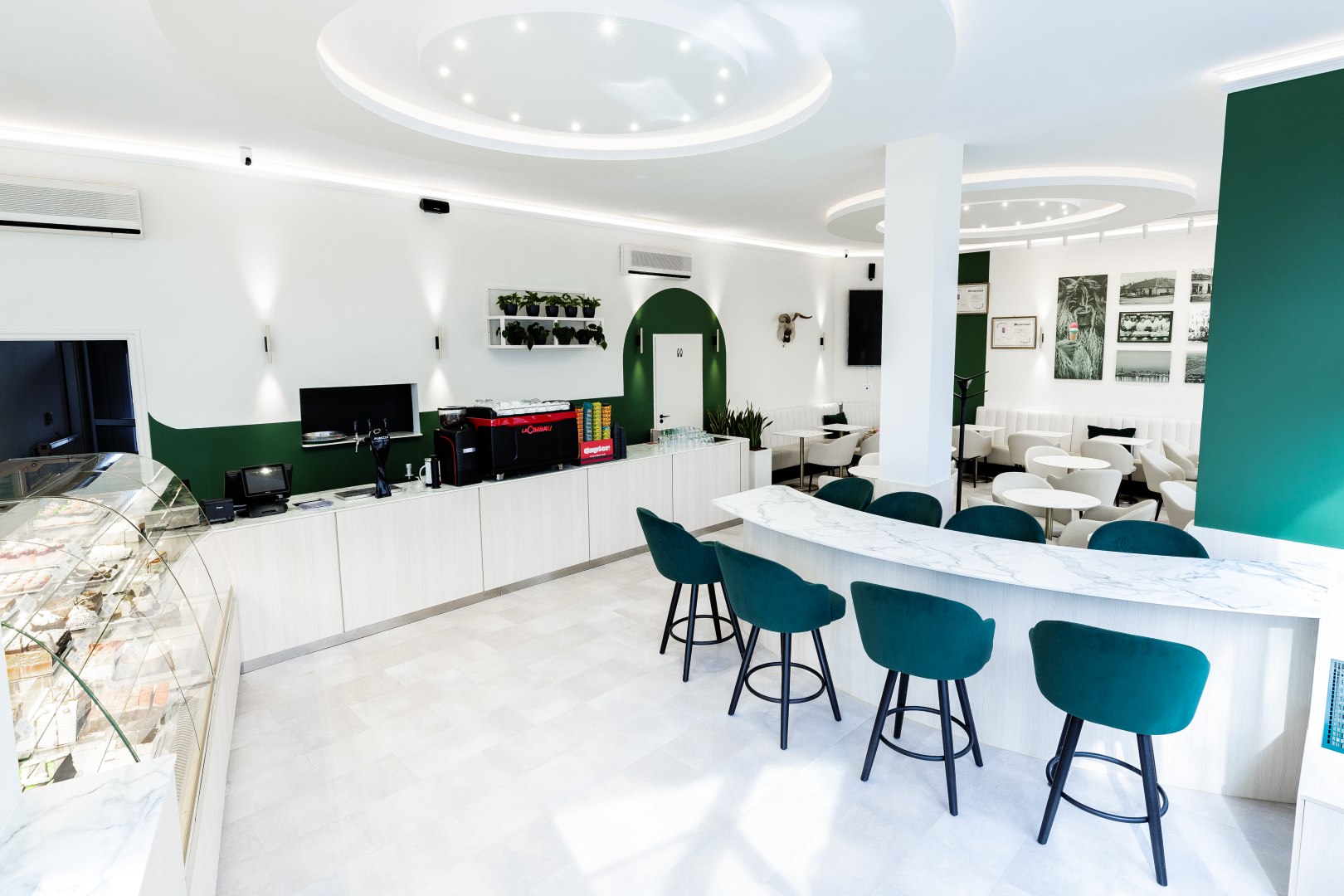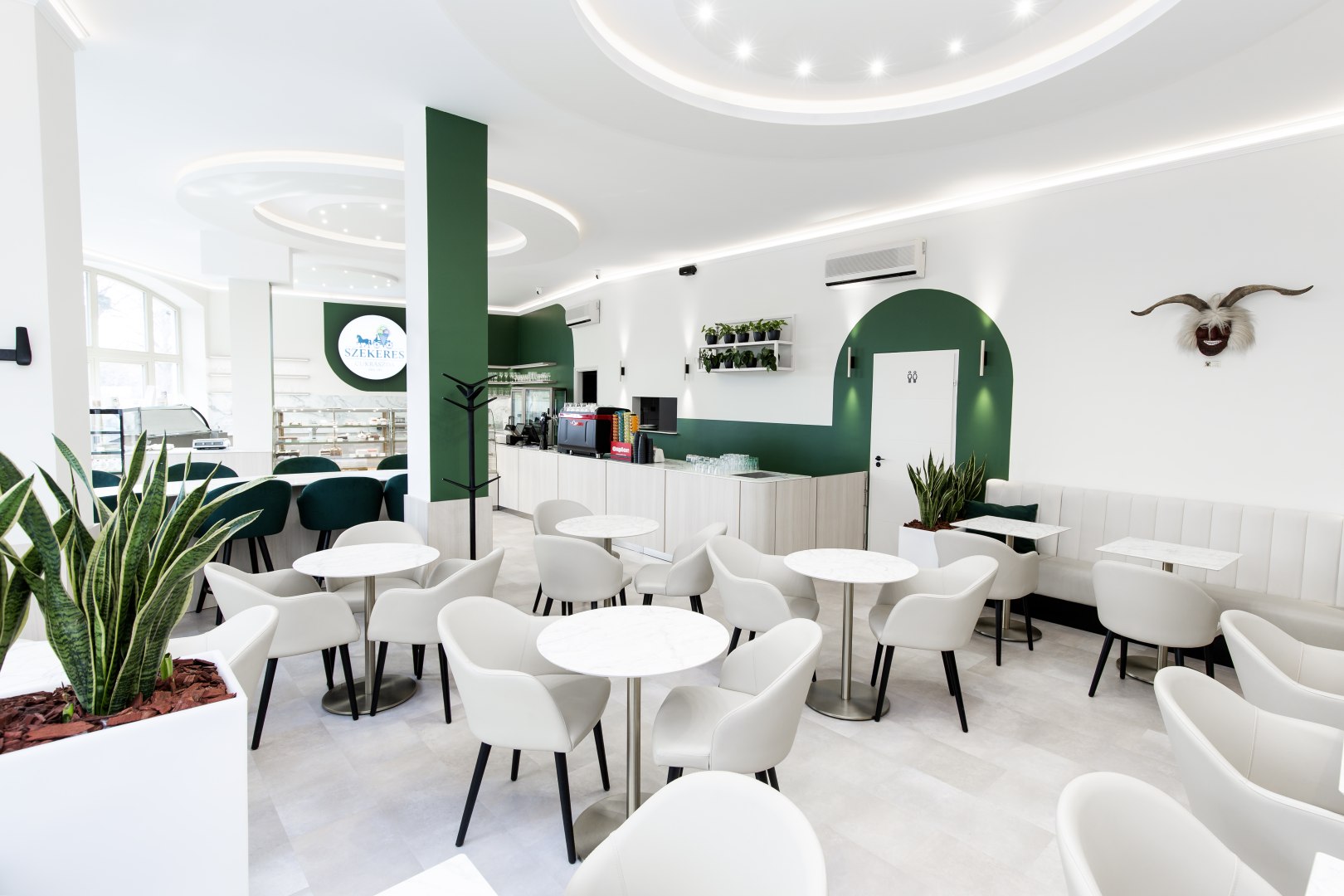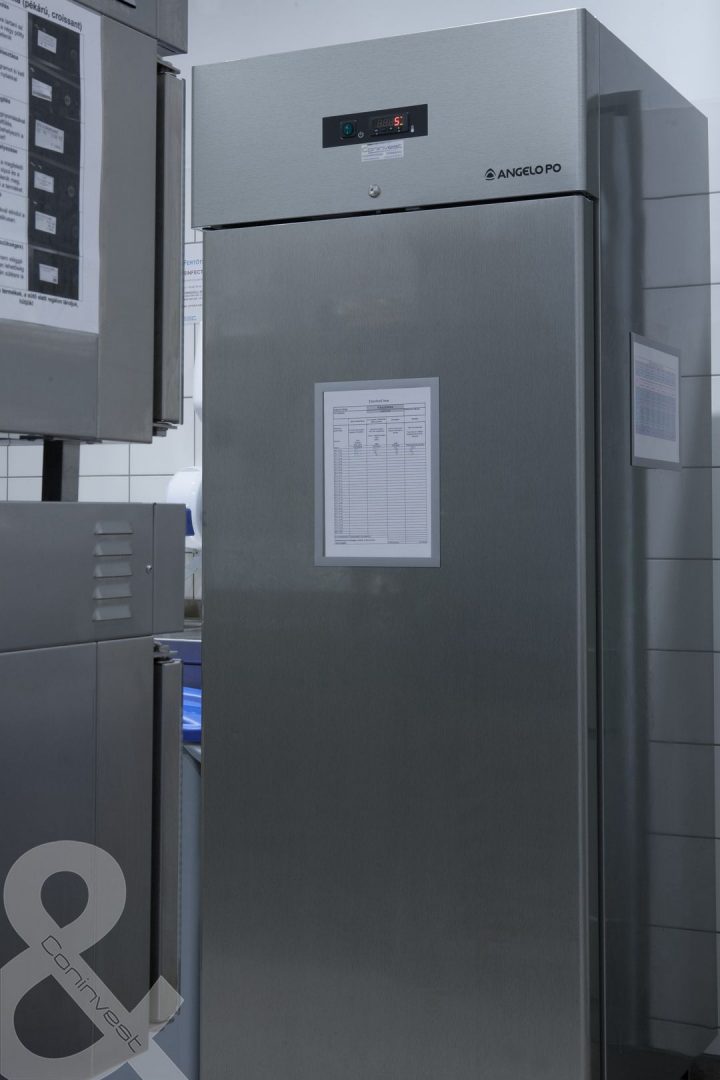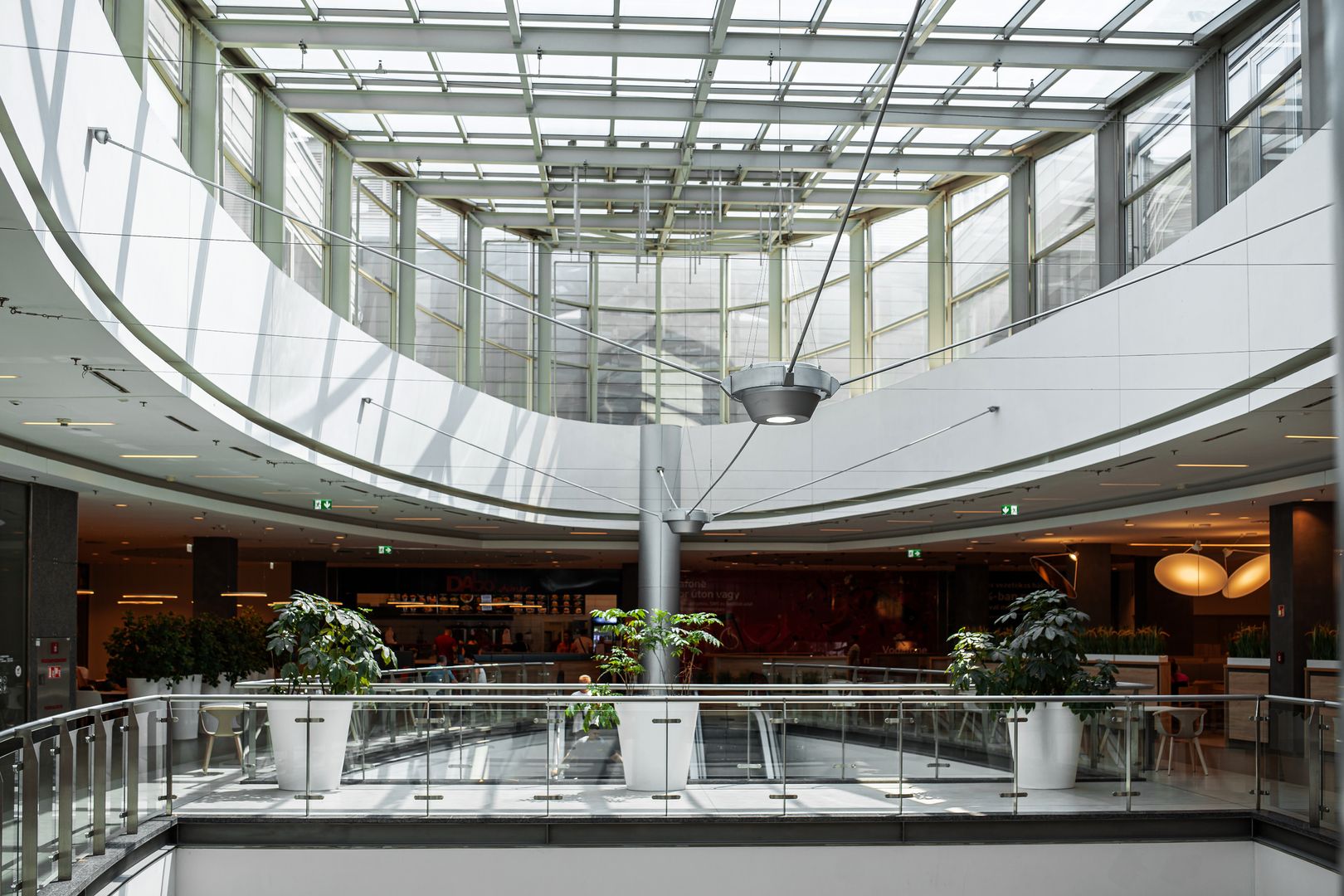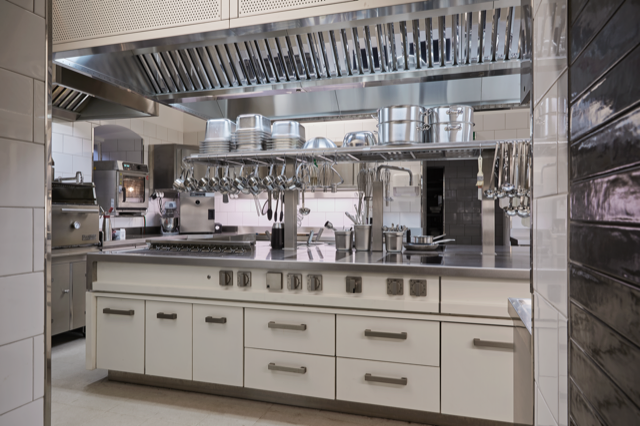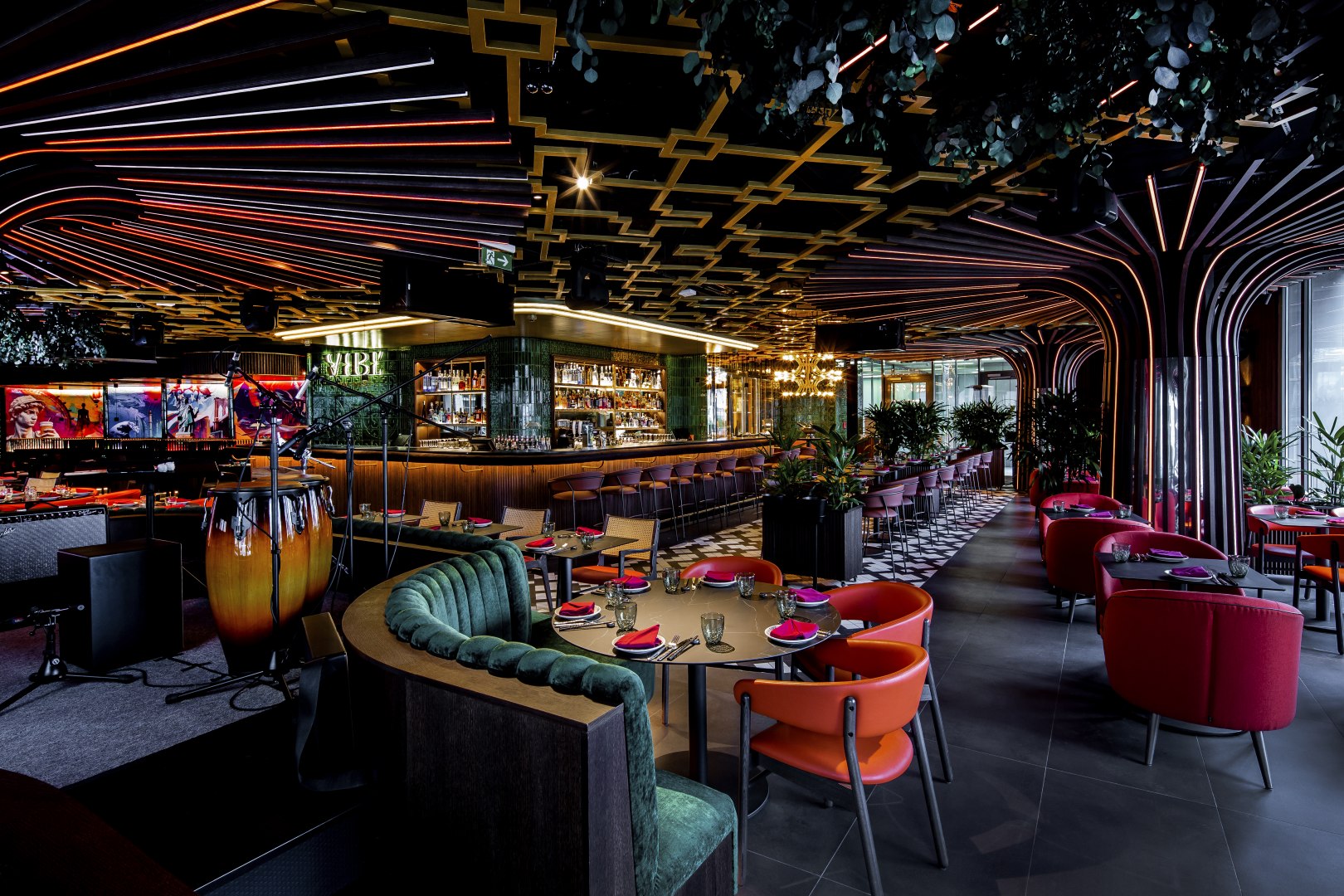In July, we were invited to visit the latest Mercedes Benz Gastronomie canteen in Stuttgart. The canteen is located in the Campus Vaihingen office complex in the middle of a hilly forest just outside Stuttgart, where an average of three thousand development engineers and international sales people work. It is the only open canteen of the German Daimler group, which external guests can visit without registration, but in order to pay, you need to have a pre-loaded Benz card, which is also given to guests at the “Welcome” counter. The canteen was planned in 2017 and was completed in 2019, which the Covid epidemic forced to close shortly after opening.

The concept
It is also very innovative within the Daimler factory catering company (Mercedes Benz Gastronomie), as the design was entrusted to an architectural firm, who not only introduced youthful interior design solutions, but also a very innovative concept: the entire canteen is designed as if we were entering a large food court. Counters of different designs and concepts with separate cash registers for the different food offerings, but these counters are also suitable for involving external and different operators. The Italian-themed pizza counter is currently run by an external operator, but the “food court” located on the other side of the terraced courtyard is suitable for accommodating 2-3 additional operators. On average, 2,200 people dine here at noon, but on peak days (Tuesday-Wednesday-Thursday) the number of diners can exceed three thousand people including external guests. The restaurant is huge and airy, with many high tables (which encourages faster consumption), but with a total of more than 1,200 seats, including the terrace. The canteen is open from 11:30 to 14:00, but everyone wants to eat between 12 and 13:00, which is why Daimler calculates a rotation of 2 per chair (not 4-5, like many canteens in Hungary). The employee “wellbeing” concept also includes being able to eat in the canteen at noon without much tumult and long queues. Why do so many people eat here? First, it is located in a very isolated place (in the middle of the forest), and secondly, the offer is very good, and it is subsidized by 40%. According to Daimler, it operates with a deficit, but the company records this as a cost item for personal benefits and balances it with the feeling of employee wellbeing that such a high-quality canteen provides in the employee experience.

The offer
Why can I say that the canteen was outstanding? Because we found an offer that suits all tastes and needs. A large design bistro for 10-14 euros serves healthy dishes on “appetizing” plates, which I discovered not at a point with the hackneyed name “Vegan corner”, but at the “Energise me” counter. My choice fell on a zucchini-green asparagus-dried tomato gnocchi, with a lemon-herb sauce, which I was hesitant to take because of my Italian husband, but it was surprisingly good. At the counter of traditional dishes (Spaetzle, classic German soup – 2 types – pork roast, with sauce, dumplings, etc.) they served them on traditional white canteen plates. Moreover, thanks to the personal card payment, they can track who has consumed what, and the system automatically analyzes and reports back (it praises or warns the consumer about healthy eating every week). Soup was only available at the traditional food counter, while the other counters offered salad and dessert in addition to the 2 main courses. Interestingly, the food counter at the Bistro also served them on designer plates. That day, I had a hamburger with fries, which didn’t fit into the concept of healthy food for me, but they offered a pork medalion with a green garnish.

Environmental awareness
In addition to providing feedback on healthy versus unhealthy foods, the canteen also tries to satisfy the environmental awareness of Germans. The CO2 emission data required for preparing the food is provided to the consumer along with each dish. This is an attempt to influence consumer habits and shift the trend from meat dishes (which require long heat treatment) to raw vegetable consumption.
Applied kitchen technologies
Let’s move on to the applied kitchen technologies, which interested us the most. After lunch, we started our professional visit in the guest area, at the dirty tray delivery belts. These were not pushed up against the sink wall, but stood freely around as two laundry return stations in the space. The bottles (since there is only returnable glass there) were collected in placed compartments. A kitchen worker stood next to each tray delivery belt, who supervised the correct positioning of the trays and the utensils on them. This was necessary because the Meiko system automatically lifted the trays vertically under the ceiling and transported them through stainless steel tunnels through the restaurant to the consumer dishwashing area. This is a very practical but delicate system. If someone were to forget a napkin on it, it could get caught in the tunnel or, if it were to get off the cover, stop the conveyor belt due to the cameras and sensors. On the other hand, it is important that large plates do not hang over the tray and that the cutlery, when removed from the plate, is placed on the tray so that the automatic magnetic cutlery picker can detect them correctly. The capacity was 14-15 trays per minute/belt, of which two arrived in the washing room. So 1800 trays/hour. A Meiko dishwasher with 3 tunnels, sized accordingly, absorbed this large amount of laundry in the consumer dishwashing area. I found it interesting that it was not the kitchen staff who cleaned and washed the dishes, but an external cleaning service company. The canteen is operated by 34 kitchen workers + the chef + the cleaning company, who not only cleans the machines and cleans the floor surfaces at the end of each shift, but also disinfects the wall tiles, doors, and door handles up to a height of 2 meters. The cleanliness of the kitchen was evident.

The other special technology was the Meiko Waste Green waste management system. In the 2 washrooms, the kitchen, and the preparation areas, we encountered a so-called In-feed station, which grinds the waste placed in it, mashes it with a little water, and collects it in a closed tank on level -1 through a specially constructed natural sloped channel system. The tank is a closed system with a mixing head, which prevents settling. On the goods receiving ramp, in a hygienically sealed stainless steel wall box, we could see the 2 connections of the suction carts. One was designed to suck the grease trap, the other to empty the waste collection tank. In the entire kitchen area, apart from the feed station, I did not smell any waste, I did not see any traces of food residue, and we could experience a particularly high sense of cleanliness. The so-called biomass is brought to Germany by an external service provider to produce biogas and manure, and thus 100% of the food leftovers from the canteen are recycled. According to the operator, the waste comes less from the plates than from the chafing dishes returned from the serving counters. Although they are able to react very quickly to the extra 1000 portions and try not to overproduce, it still happens that the contents of the GN containers collected from the serving counters produce the majority of the waste.
In a word: we were not disappointed with German design and thoughtfulness here either!
-Kertész Mirjam


